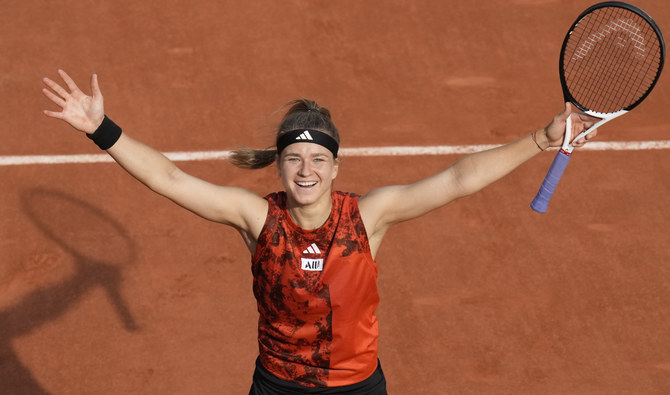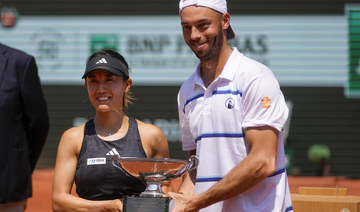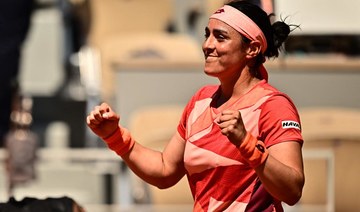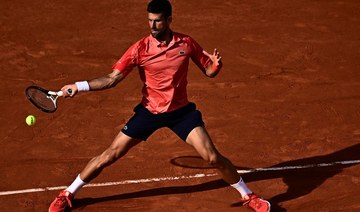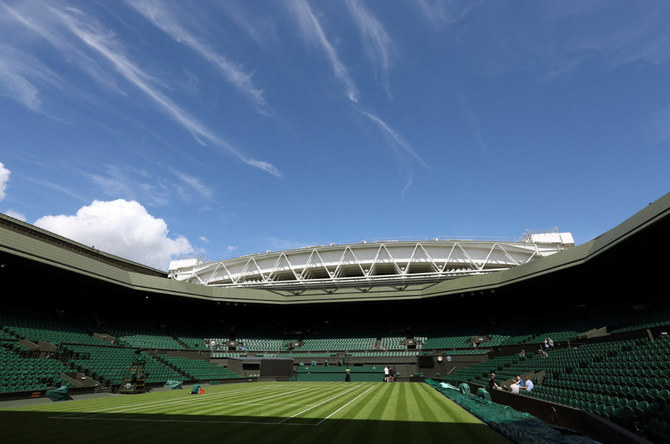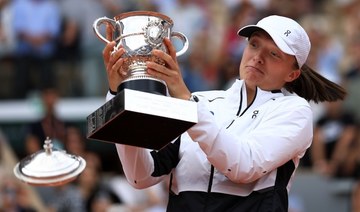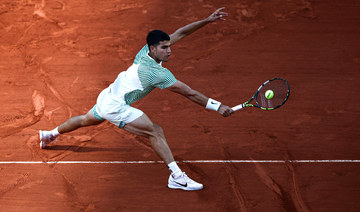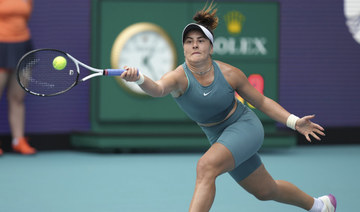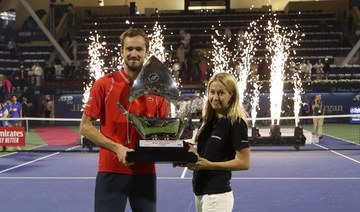PARIS: As it is, Karolina Muchova was the unseeded, unexpected participant in the French Open semifinals.
And then, dealing with cramping legs nearly three hours into the match, she was just one point from losing to No. 2 Aryna Sabalenka, who entered Thursday with a 12-0 Grand Slam record in 2023, including an Australian Open title.
Muchova somehow worked her way out of that difficult situation, grabbing the last five games against an error-prone Sabalenka for a 7-6 (5), 6-7 (5), 7-5 victory at Roland Garros to reach her first major final at the last place she expected.
“A roller coaster,” Muchova said.
In Saturday’s title match, she will meet No. 1 Iga Swiatek, the defending champion, who got past No. 14 Beatriz Haddad Maia 6-2, 7-6 (7) on Thursday night. Swiatek is seeking a third title in Paris and fourth major championship in all and her win in the semifinals assured the 22-year-old from Poland of remaining atop the WTA rankings.
At No. 43, Muchova is the fourth-lowest-ranked women’s finalist in French Open history. On the other hand, she is now 5-0 for her career against players ranked in the Top 3.
It was tough to decide which was more stunning: that Sabalenka lost — or the way she lost.
“I just tried to keep fighting and it worked,” Muchova said. “I really don’t know what happened.”
Well, here are the basics: Sabalenka held a match point while ahead 5-2 in the third set, but Muchova erased that with a forehand winner. That began a run in which Muchova collected 20 of the last 24 points.
“After that game, she kind of stepped in and started playing a little bit more aggressive, and I kind of lost my rhythm,” was Sabalenka’s summation. “Yeah, I wasn’t there.”
Until Saturday, this trip to Paris was far more complicated off the court for Sabalenka than on it, where all six of her opponents was unseeded.
The subject of Belarus’ role in Russia’s invasion of Ukraine — the attacks began in February 2022 and continue to this day — and Sabalenka’s stance on the matter arose repeatedly, in part because she faced two Ukrainian opponents.
She was asked about the war following each of her first two victories, and Sabalenka refused to participate in standard post-match news conferences after her next two contests, saying she felt unsafe and wanted to protect her mental health and well-being. She returned to speaking to the media after her quarterfinal win.
“Some challenges,” Sabalenka said. “Emotional challenges.”
Swiatek did not begin particularly well on Thursday, getting broken at love in the very first game. But she quickly turned that set around. Then, in the second, the big-swinging, left-handed Haddad Maia took a 3-1 lead, before Swiatek got back on serve.
In the tiebreaker, Haddad Maia held a set point at 6-5, but she slapped a seemingly neutral ball into the net. A few moments later, it was over, allowing Swiatek to improve to 60-13 in Grand Slam play for her career — the same record Serena Williams had after 73 matches at majors.
“It was stressful in some moments, so I’m happy that I was really solid and I was able to close it in the tiebreaker,” Swiatek said. “It wasn’t easy.”
Hours earlier, in the 80-degree warmth of Court Philippe Chatrier, Muchova’s variety and all-court style provided the right mix against one of the game’s biggest hitters.
An oversimplification, granted, but think of it this way: Sabalenka tries to hit the ball past her opponent; Muchova tries to hit the ball away from her opponent.
“It’s kind of a little bit tricky to build points against her,” Sabalenka said.
The third set appeared to tilt toward Sabalenka when her pressure prompted some extra errors. A long forehand by Muchova resulted in a service break and a 4-2 lead for Sabalenka, who held for 5-2.
That’s when it all began to come apart for her.
Sabalenka needed just one more point to end it, but Muchova came up with a big serve and a quick-strike forehand winner to erase that chance.
“Just another point,” Muchova would say later.
Sabalenka couldn’t break there, but then she served for the victory at 5-3 — and again couldn’t come through. Muchova broke to 5-4, then sat down and massaged her right thigh during the ensuing changeover. Soon enough, suddenly, it was 5-all.
Sabalenka continued to miss and, as if blaming it all on her racket, tried to get the attention of her entourage in the stands so she could swap her equipment. She finished with 53 unforced errors, nearly twice as many as Muchova’s 27.
Muchova — who was stretching between points — simply kept hitting big shots.
“I could see,” Muchova said, “that she was struggling a little bit and doing fast mistakes.”
Muchova, a 26-year-old from the Czech Republic, has always found that her game worked best in faster conditions: Her best previous showing at a major was a semifinal run at the 2021 Australian Open on hard courts, her lone WTA title came on a hard court, and she never made it past the third round on the red clay at Roland Garros until now.
“It’s not my favorite surface,” Muchova said earlier in the tournament, “but I think I can play good on it.”
Sure played well enough Thursday.



